Newborn pups
Mothers & pups
Older 'whitecoat' pups
Spotty pups
Adult seals |
I'm
lucky enough to live about 80km from Donna Nook National Nature
Reserve which, as well as being a Royal Air Force bombing
range, is the site of a huge grey seal rookery from late October
through to December. I've visited most years since 1999, and the number of both pups and visitors has grown. In 2011 over
1,400
pups were born at Donna Nook, visited by almost 70,000 people!
Despite the crowds, there are still some great photos to be had.
|
|
Newborn pups
Many
of the females haul themselves right up into the sand dunes to give
birth. The pups weigh 10 to 14kg at birth (male pups are heavier), and have a creamy-white 'lanugo' coat which is not
waterproof.
This pup was no more than a
few hours old and needed its mother's fat-rich milk, but she looked
exhausted and we wondered whether the pup had managed to feed. As we
watched, the pup became more active and crawled towards its mum,
but she looked somewhat bewildered. I suspect she was a first-time
mother, and we could only hope the pup would start to feed soon. |
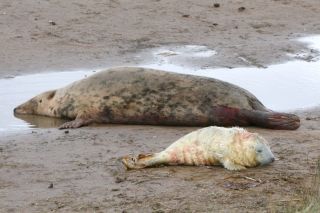 |
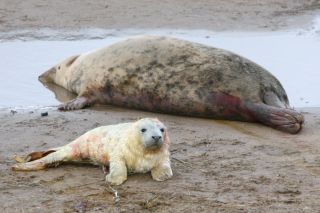 |
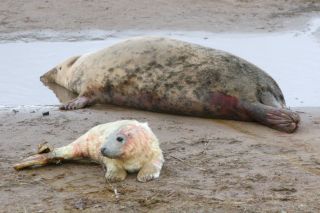 |
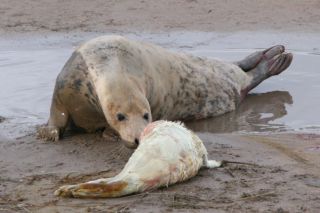
|
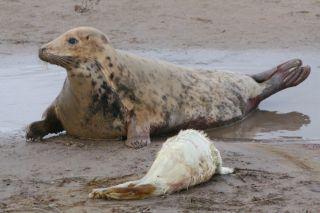 |
Mothers
often rest a little distance from their pups in between feeds and it
can look as though the youngsters have been abandoned, but if the
pup is well-nourished and healthy mum is probably not far away.
Some of the pups are so young that the umbilical cord is still visible,
but the babies are immediately alert and curious, if a bit 'baggy' and
crumpled. |
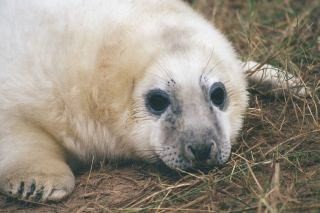 |
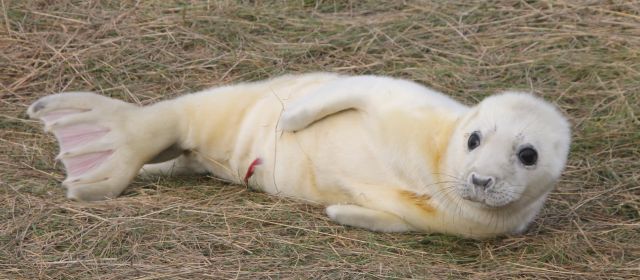 |
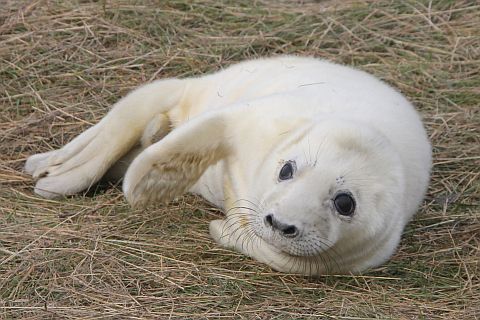 |
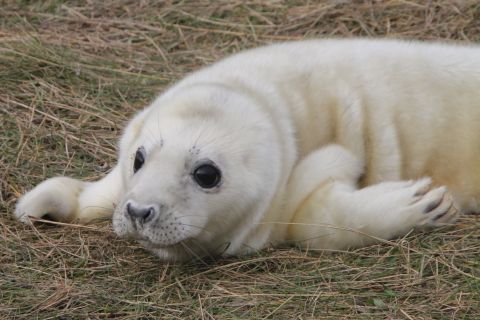 |
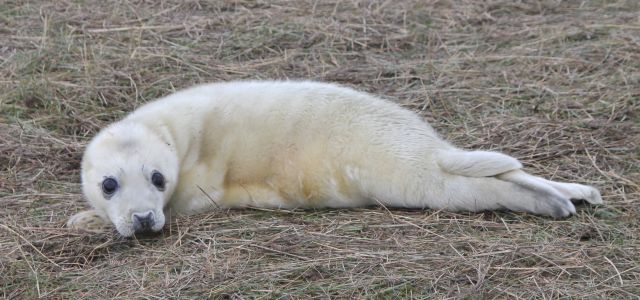 |
| It's
unusual to see pups interacting with one another, but the pair in the photos below seemed
to be keeping each other company - one was even trying to feed from
the other. |
 |

|
Mothers & pups
Grey seal milk is 60% fat, and the
pups gain about 2kg in weight every day but mum has to go without food
whilst onshore. |
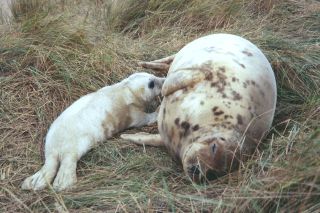
|
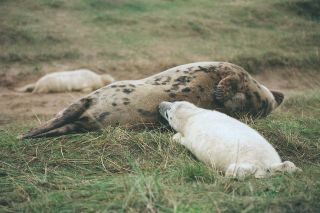 |
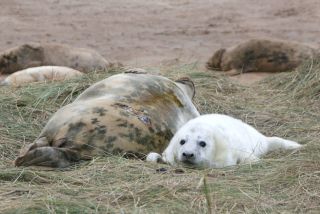 |
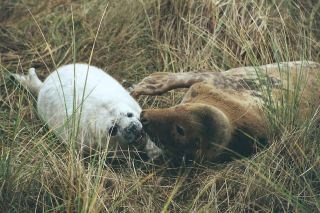 |
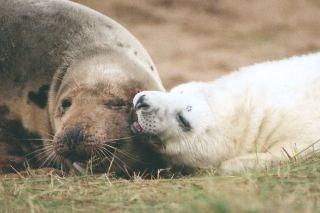 |
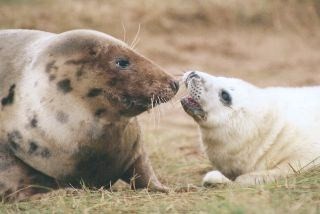 |
| The
mothers suckle their pups for 3 to 4 weeks, during which
time the youngsters become more boisterous. Some mothers
are tolerant of their pup's antics and even play with them, but
others
clearly have limited patience - the pup above got a 'hard stare'
from mum, and the one below tried to give its mother a playful
slap and was soon put in its place. |
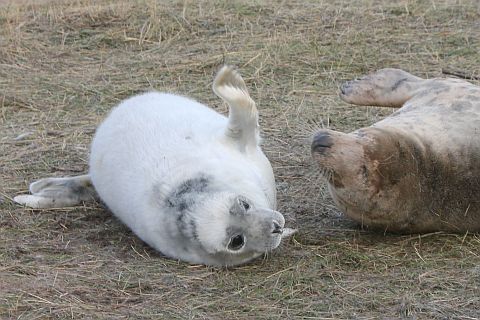 |
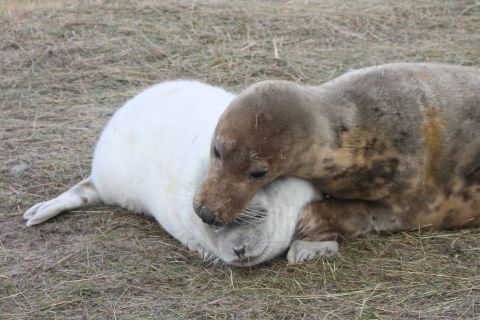
|
Older 'whitecoat' pups
As
the time to be weaned approaches, the pups are extremely tubby, having
trebled their birth weight in only 3 or 4 weeks. At this point they
spend a lot of time lying around being fat, furry and cute. |
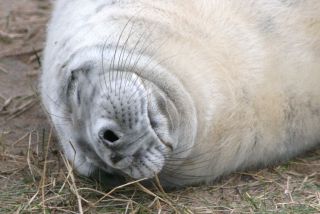 |
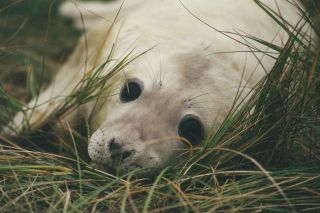 |
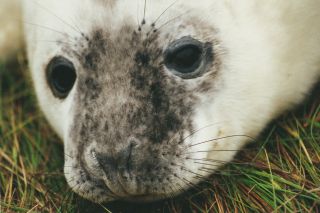 |
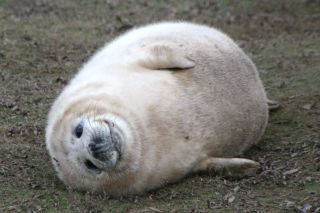 |
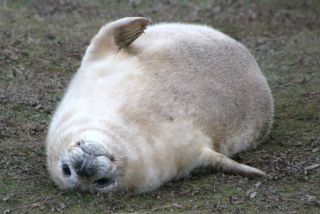 |
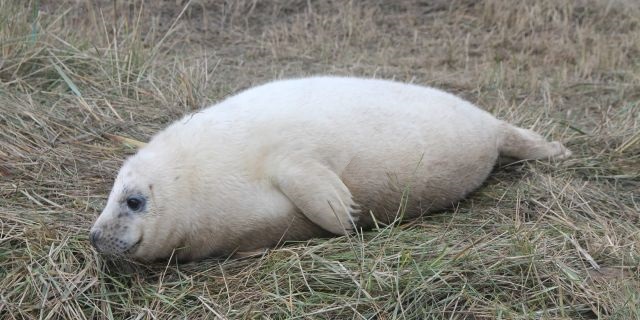
|
Spotty pups
The
grey seal pups start to moult their lanugo coat a few days before or at
the time of weaning, and it is replaced with their spotty adult
coat. Once their mothers have abandoned them and gone back to sea to
feed, there's nothing for the pups to do apart from lounge around
(sometimes in the midst of a pile of their lanugo fur) and sleep a
lot. When it feels ready, the pup will haul itself across the sand
dunes and mud flats to the cold North Sea. |
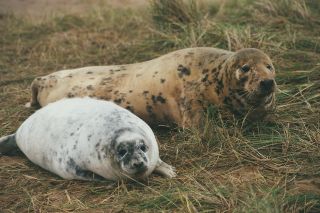 |
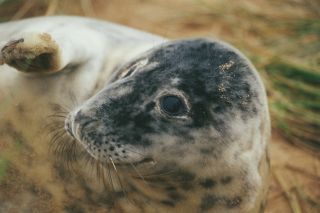 |
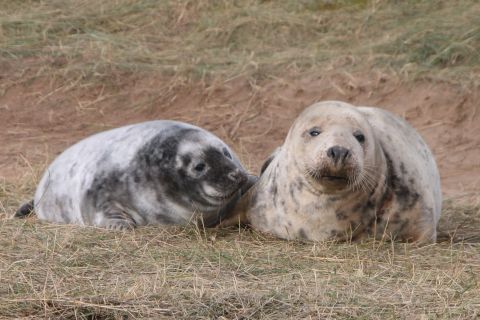 |
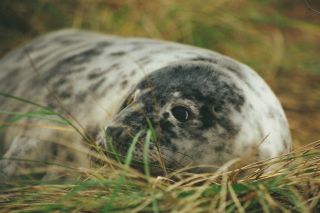
|
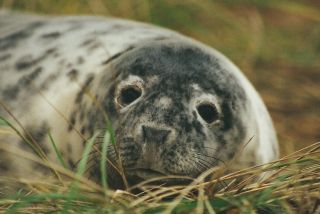 |
|
|
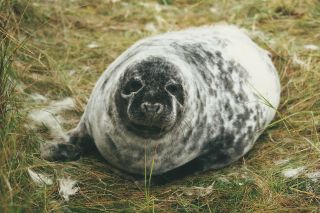 |
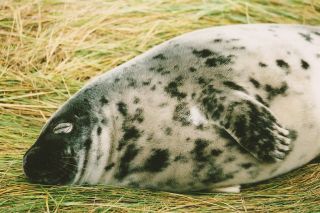
|
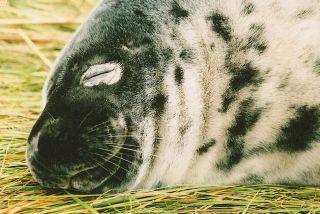 |
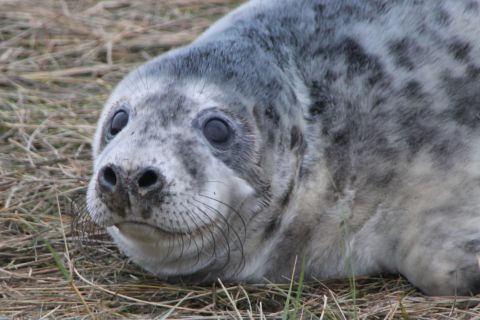
|
Adult seals
The
adults like to lounge around too, and show off how good their blubbery
insulation is by choosing to lie in pools of freezing water whilst the
human visitors shiver in several layers of clothing. |
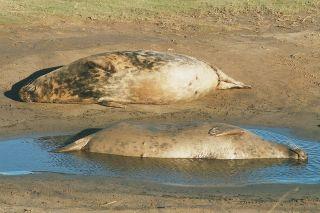 |
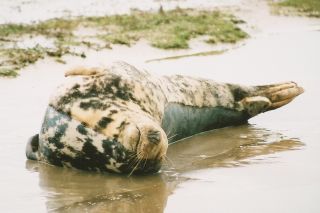 |
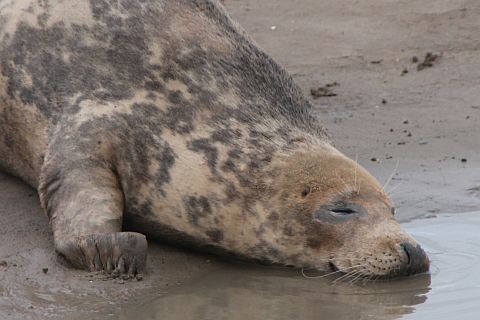 |
Male
grey seals have wrinkled skin on their necks, often scarred from
fighting, although the first bull below looked as though he was only
young and hadn't done much fighting.
The
bulls at Donna Nook don't seem to defend a territory or a harem of females
as such, but some will claim a patch of sand dune where they appear to
do little more than sleep, occasionally approaching unwilling females
only to be chased off. Their best chance of mating is to hang around
near the shoreline and intercept more willing females as they head back
out to sea. |
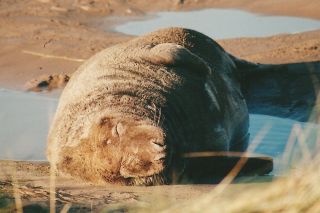 |
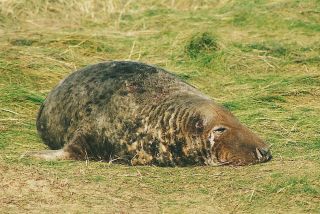 |
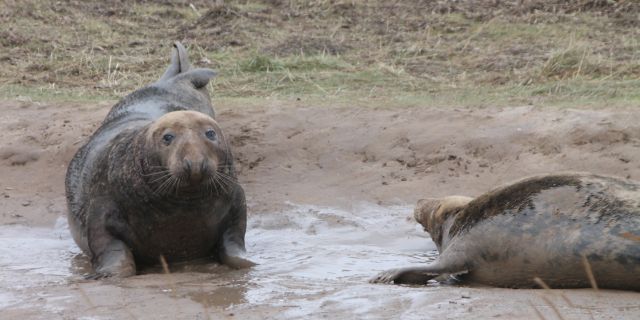
|
Website created by Gill
Sinclair
www.gillsinclair.net
All
images on this page © Gill Sinclair 1999 to 2013.
The images on these pages must not be copied
or saved without the express permission
of the copyright owner.
Last updated 9 December 2013
|